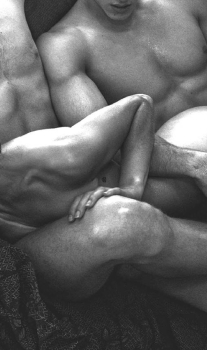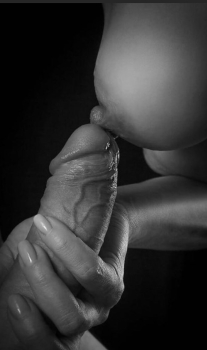New Year's striptease at home or in the penthouse: how to order a private show so that it becomes the main event of the holiday

Christmas striptease is not entertainment in the"why not" category. This is the same element of the holiday that turns a typical night into an event that is remembered with a bear smile. To be honest, I see the same thing every year: men choose a show with emotions, order the first thought, and then be disappointed. Not because the girl is bad, but because everything is arranged. Personal striptease is not pizza, it cannot be ordered in twenty minutes and hope for a miracle. So I tell you how it looks from the inside, without shine.
First you need to understand one thing: the Right demonstration is 70% preparation and only 30% girl. Seriously. The girl can be beautiful, professional, flexible, suit, bright and perfect figure, but if you choose the wrong format, the wrong room, the wrong scenario, the show will not work. Therefore, we start with the choice of space. House, apartment, apartment, penthouse everywhere has its own nuances. Ideally, if there is free space: at least two meters around the artist. The girl should not just move-she should dance safely, take off the elements of clothing, approach the viewer and cooperate. When the show switches between a table, sushi sets, a chair and a Selfie Tripod, believe me, the aesthetics are not the same.
Now about the light. Men always think Dark is sexy. No. In complete darkness, the girl turns into a shadow and you lose half of the pleasure. The display should be transparent, not dark. Warm light, wreaths, braids — that's enough. If possible, set the ring lamp to the lowest light. I know girls who bring their own candles, but this is already the top tier. The new year's environment usually plays into the hands: Christmas trees, candles, wreaths-all this makes the image softer and more expensive.
Next is the choice of a girl. It's not your job to predict the ideal format, but if you want a show that will be a festive event, you need a professional, not "dancing a little after work". Take a closer look at the questionnaires. As a person who follows catalogs, I always say: a girl with a photo in a suit (snowflake, Santa Claus, latex, evening Pictures) is really a person preparing for the show. If the questionnaire contains only a selfie in the kitchen and a photo in the laundry room-do not be fooled, then striptease will be minimal.
The next item is the format. There are three main display models:
* classic privacy without interactivity,
* game with rpg elements,
* festive program-the most popular option for the new year.
The classic is suitable for night cameras. Roll is good for companies (for example, when a girl comes out as a strict teacher or Snow Queen). The holiday program is what men want the most, but very little. This is a striptease that works with Christmas attributes, ingenuity, subtle provocations, emotions and impulses. A demonstration that shows not only the body, but also the atmosphere.
Yes, the key to ordering is to tell the girl who the show is for. If this is a corporate dinner in an apartment, a small home company or individual for one person — everything will be different. The girl must understand whether its format will suit your request or not. There are dancers who are ideal for one client-delicate, slow, with an emphasis on sensuality. There are those that are created for companies-bright, loud, active. Try putting a second camera in the evening-it will be too much. Check it out at the party first-it will disappear. Therefore, do not hesitate to write:"We are three, home format, we want a show without anything." Or vice versa: "penthouse, 12 people, we want an energetic show."We are all adults, we all understand.
Now the most important thing: time. New year's party is chaos. Cargo arrives late, taxis disappear, traffic jams are chaotic. So the girl who promised to get to ten, doubts me. The specialist always leaves the resource. If you need a show at 22:00, call at 21: 30 so as not to be nervous. On new year's eve, no one will come anywhere on time-remember this as the law of physics.
A separate moment is music. The most common problem: the subscriber launches the track from the phone, the sound is terrible, the place is lost. The usual column is half the success of the show. I have two of them-a small portable and a more powerful one. But if the client asks in advance if a column is needed, it is he who really cares about the results. As a result, not only the girl, but the whole situation.
Now about the penthouses. This is the perfect place for a Christmas striptease. The atmosphere is plentiful, the light is beautiful, and the beautiful view from the window in the evening. But many consumers think that it is enough to "get a penthouse" and everything will be perfect. No. The penthouse must also be prepared. Remove the excess, create an open space, think about where the girl can enter, where she can dance. Do not put all the audience in one row, as in a theater. To preserve the collaboration, it is better to use a semicircle.
A nuance that only professionals know: alcohol. Men like to think that the shows under the influence of alcohol know better. Partly yes, but if the company crosses the line, it indicates a mess. The professional must be able to control the atmosphere. But if customers no longer open their eyes, no one can save the show. So, if it's really beautiful private, keep the visitor mode under control.
Now let's talk about the girl herself. Is it worth ordering not only beautiful, but also burnt ones for the new year? "no. Professionally charged. The girl should show, not"try again". This is immediately felt. Flexibility, appearance, energy-all this cannot be faked. Specialists who work on holidays are prepared in advance: to train, buy new clothes, record songs, do makeup in the studio. If the girl writes:" If you pay a taxi, I can come, " run. During the holidays, The Good Girl is busy a minute after the release of the free slot.
Now the main deception of customers: "striptease is a dance without clothes."No. This is a small demonstration. It has a plot, dynamics, peaks, pauses, lenses. If the girl can work on the structure, then the display will always be bright. I know dozens of dancers who make full-fledged programs: first warm-up, then slow block, then the active part, then the final. When a man sees this for the first time, he realizes how big the difference is between "just clothes" and "holiday show".
If you want to get the most out of it, tell your daughter in advance what the company is doing. It sounds strange, but it helps to establish contact. One girl can adapt jokes to IT people, the second to entrepreneurs, and the third to actors. Role-playing elements work best if you have a connection with the audience. A professional who understands the spirit of the company will easily become an evening star.
Do not forget about the borders. Striptease is not sex or escort. This is a separate genre. If you need a set of services-inform about it in advance. Do not try to discuss this" in the stream", it always spoils the space. The specialist must understand the format in order to determine in advance whether the application is suitable for it.
Finally, remember the most important thing: the peculiarity of Christmas is emotions. Then men will not remember either the figure, or the track, or the costume. They remind of the holiday, movement, lightness, unexpected moments. To do this, you need to choose the right girl, properly prepare the space and correctly formulate your expectations.
When these three things are combined, the show will become not only a decoration of the holiday, but also the main event of the night, a "moment"that will remind you of the new year as much as you want. Because personal striptease is always a mixture of aesthetics, energy and magic. And on New Year's Eve, magic works stronger than usual.
Text author: Sofia, Guide to Love, Escort and Striptease









